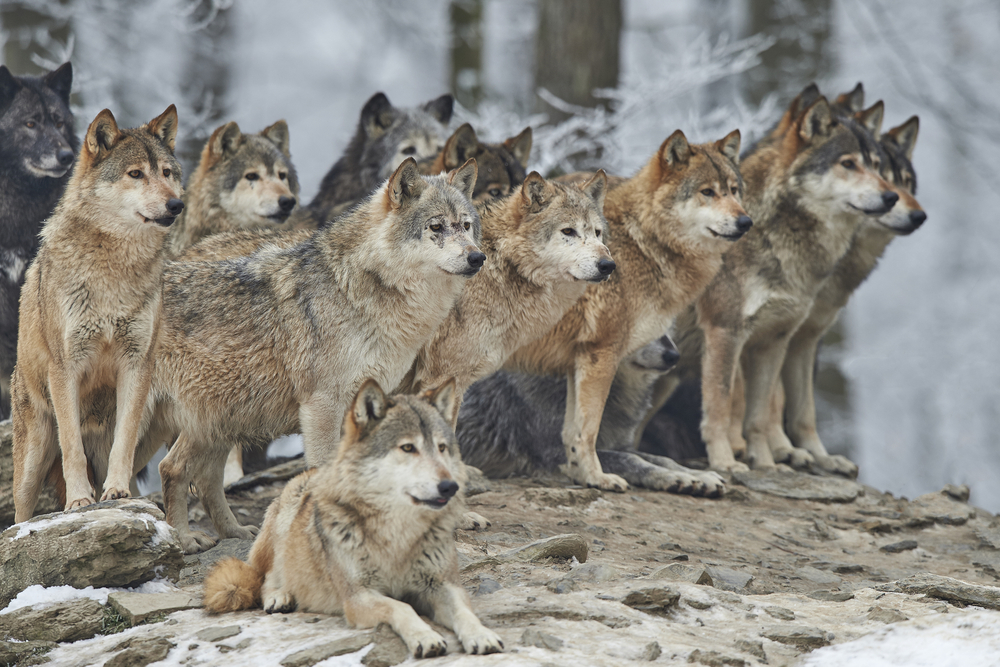
6th in a #ReadWithMe series.
When you look at your dog, you seldom thing it is “a crucial innovation”. Yet dogs were. We have difficulties even conceiving that somebody, at a certain point, thought about domesticating them, as we are so used to having them on our side. Yet somebody, at some point, did.
The domestication of dogs happened between 20,000 and 40,00 years ago.
It is likely, writes Matt Ridley, “that the domestication began with wolves tentatively hanging around human camps to try to scavenge leftover carcasses. The bolder ones risked being speared, but got more food; gradually boldness in the presence of people became commoner in one group of wolves till people saw the advantage of having semi-tame wolves hanging around”.
Ridley knows that “it is stretching it to call domestication genetics an innovation”, particularly when the view widens to include the way in which we human beings domesticated: we are dogs to our wolves ancestors. Though it is not clear which genes accomplished the result, some kind of selection took place, changing us profoundly, in a way fitter to a far more gentle, less violent and rumbustious life.

In closing his chapter on the invention of the dog, Ridley makes one of the key points of his book in a very clear way: “Innovation is a lot less directed and planned, even today, than we tend to think. Most innovation consists of the non-random retention of variations in design”.

READER COMMENTS
Jon Murphy
Aug 20 2020 at 10:20am
I will resist making a dated 2000’s reference.
One of the big things I have gotten from these posts and Ridley’s book (which I bought on your and Don Boudreaux’s recommendation) is the reciprocal nature of innovation. Something is only innovative because it serves someone. I could invent any number of things, but if no one else sees how neat they are, they are not innovative; they are just wastes of resources.
I suspect this reciprocity is why innovation is not linear, that industrial planning tends to fail to produce real economic growth and sustainability.
Fred
Aug 20 2020 at 1:36pm
Adolescent male wolves get booted out of the pack. I encountered one on the Aleutian peninsula once. He seemed subdued not aggressive and lost as in “my family kicked me out” lost. I can easily imagine one off these outcasts following a band of hunter-gatherers and getting incorporated. A H. sap/C. lupus combination is a significantly more effective hunter than either alone.
Isn’t there evidence that this partnership occurred at multiple sites independently?
Phil H
Aug 21 2020 at 12:39am
“Innovation is a lot less directed and planned, even today, than we tend to think. Most innovation consists of the non-random retention of variations in design”
I think we have to disagree with that… don’t we? Because what’s described there is natural selection. And that’s not what innovation is. Historically, there have always been people making new things. But it’s only recently that those novelties have been able to spread, and have been properly motivated by user demand. I would have said, that’s what distinguishes innovation from random stuff that people do.
I mean, I’m sure Ridley’s right that there’s still a lot of serendipity and chance in innovation. But it’s “innovation” as opposed to anything else, because it’s no longer *all* serendipity.
Mark Z
Aug 21 2020 at 1:17am
There may not be a clear line between what’s intentional and what isn’t. Dog domestication has been a mixture of natural selection on random variation and intentional breeding. There are many areas where a mixture of serendipity and design yield very useful ‘innovations,’ and it’s not clear which factor is dominant. E.g., drugs invented for one disease that unexpectedly turn out to treat another disease, or drugs that work very well but are discovered to work for reasons not quite the same as why they were expected to work (it was recently discovered using CRISPR screening that a surprising number of cancer drugs, including some very effective ones, don’t seem to accomplish their results by the mechanism they were supposed to work). Not quite design, but also not quite blind luck.
Comments are closed.